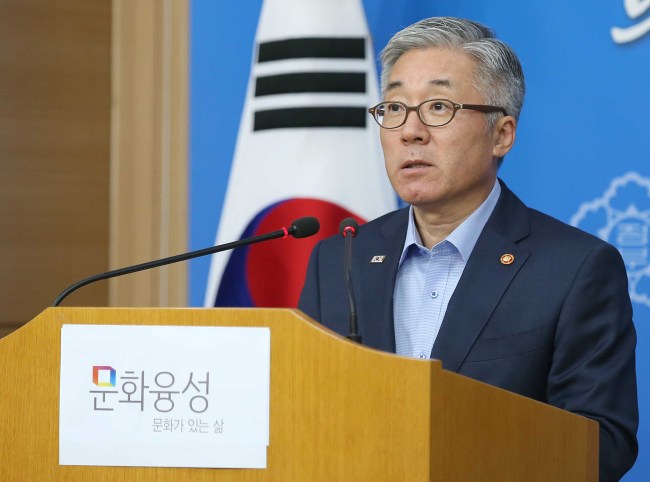The Ministry of Culture, Sports and Tourism said Tuesday that it would create multipurpose cultural centers in Seoul in an effort to rediscover Korea’s traditional arts and culture and spur the development of Korean content.
In partnership with Hanjin Group, the government will build a high-tech facility called “K-Experience” next to Gyeongbokgung Palace to allow tourists to experience the country’s traditional and modern arts and culture.
The center, which will be built by 2017 on the former site of a residential building for the U.S. Embassy, will include venues for leisure activities that will generate synergy with nearby cultural areas and streets such as Insa-dong, the ministry said.
In partnership with Hanjin Group, the government will build a high-tech facility called “K-Experience” next to Gyeongbokgung Palace to allow tourists to experience the country’s traditional and modern arts and culture.
The center, which will be built by 2017 on the former site of a residential building for the U.S. Embassy, will include venues for leisure activities that will generate synergy with nearby cultural areas and streets such as Insa-dong, the ministry said.

The plan to boost cultural content is in line with President Park Geun-hye’s renewed policy aimed at strengthening the cultural industry that can add value to the country’s growth.
"We seek to elevate Korea’s image and value through culture,” said Minister of Culture, Sports and Tourism Kim Jong-deok said in a press conference.
"The country’s cultural belt will create an ecosystem with a virtuous cycle of content production, distribution and consumption.”
Also, the government will renovate a gymnastics stadium in Jamsil into a K-pop concert hall with 15,000 seats to promote Korean music by 2017.
It will open a venture center in November in the former building of the Korea Tourism Organization in the historic downtown for tech start-ups to produce and export content such as animation.
The center will invite and house some 140 content start-ups, which will be able to operate without paying rent in the first four years. They will also be able to closely collaborate with media start-ups in the Culture Creative Convergence Center, which opened last February, in Digital Media City in Sangam-dong, western Seoul.
The two centers not only aim to foster start-ups to produce “killer content,” but also create the next Korean Pixar that uses both technology and art, borrowing from a model in Silicon Valley where tech start-ups work closely with Hollywood filmmakers in entertainment technology.
The Korea Creative Content Agency noted that the industry needs to create more killer content and diversify its markets or export destinations as the popularity of Korean content is waning overseas, including in Japan, the biggest market for K-pop and Korean drama.
The government and KOCCA seek to support Korean production companies entering new markets, such as China and Indonesia, via joint ventures or strategic partnerships.
By Park Hyong-ki (hkp@heraldcorp.com)

















![[KH Explains] Hyundai's full hybrid edge to pay off amid slow transition to pure EVs](http://res.heraldm.com/phpwas/restmb_idxmake.php?idx=652&simg=/content/image/2024/04/18/20240418050645_0.jpg&u=20240418181020)

![[Today’s K-pop] Zico drops snippet of collaboration with Jennie](http://res.heraldm.com/phpwas/restmb_idxmake.php?idx=642&simg=/content/image/2024/04/18/20240418050702_0.jpg&u=)